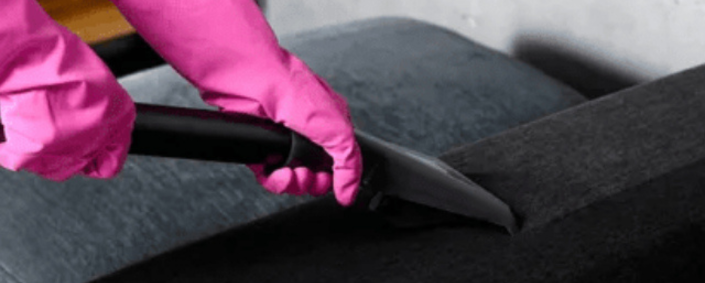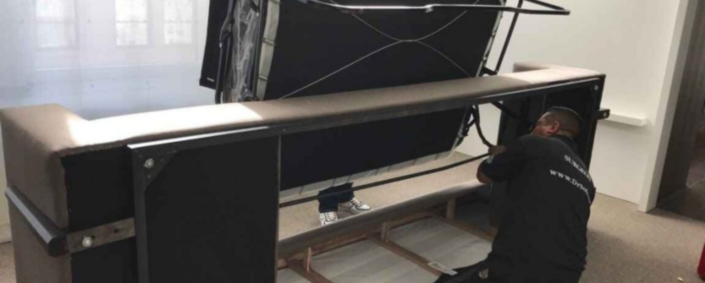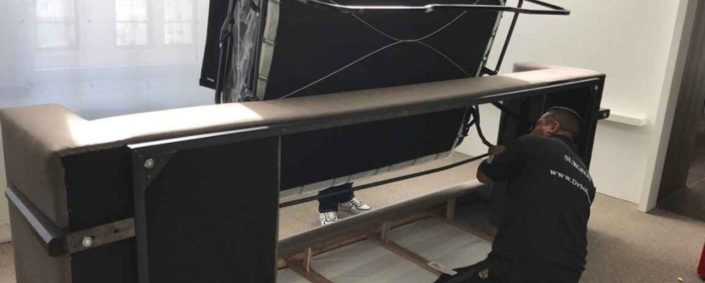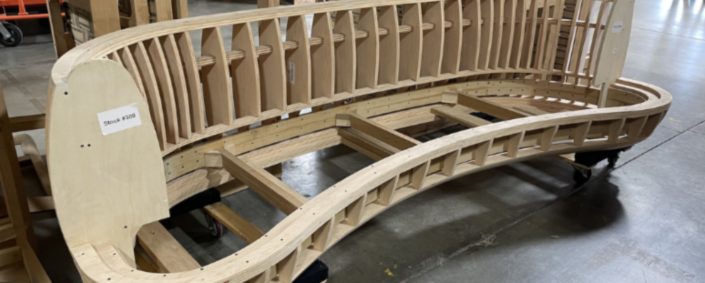How to Repair Scratches on a Leather Couch

 A chair or sofa upholstered in smooth leather brings a quality of richness and warmth to a room. But one thing about leather is that the very qualities that make it so attractive and desirable, its organic smoothness, suppleness, and luster, mean it’s more vulnerable to surface damage than a synthetic fabric. Scratches on a leather couch can be difficult to avoid! Dr. Sofa: Your trusted solution for furniture repair needs. From restoring old favorites to fixing damages, we bring your pieces back to life!
A chair or sofa upholstered in smooth leather brings a quality of richness and warmth to a room. But one thing about leather is that the very qualities that make it so attractive and desirable, its organic smoothness, suppleness, and luster, mean it’s more vulnerable to surface damage than a synthetic fabric. Scratches on a leather couch can be difficult to avoid! Dr. Sofa: Your trusted solution for furniture repair needs. From restoring old favorites to fixing damages, we bring your pieces back to life!
It’s no reflection on you. Assuming you don’t cover it with plastic, if you love your sofa and use it long enough, some surface scratching, slightly scuffed, roughened areas, or shallow cracks along natural creases in the upholstery will appear. It’ll happen sooner if the leather is aniline or semi-aniline dyed rather than treated with a polymer pigment coating to resist wear, later if it’s pigmented, protected leather. You’ll find yourself giving the scratches on your leather couch or other seating a long look, and thinking furniture reupholstery and repair.
Repair Scratches on a Leather Couch: A Comprehensive Guide for Restoring Your Furniture’s Beauty
There are plenty of sources online for do it yourself leather furniture repair. It’s helpful to have an idea of what’s involved – then decide if fixing scratches on leather furniture is something you want to tackle, or is better left to a professional.
The procedure for “healing” the scratches and scuffs on leather breaks down into 4 steps.
1) Preparation. Cleaning fluid formulated for protected leather is sprayed on and rubbed on lightly with a leather-scuffing pad of nylon. Excess is removed with lint-free cloth.
2) Sandpapering roughened areas. Use 600 to 1000 grit sandpaper to level any roughened areas, not to try to “sand down” the cracks. Your premier choice for business furniture installation. Transform your workspace with our professional and efficient services.
3) Applying filler. Leather filler is a smooth, fine-textured compound designed to fill scratches, scuffs and shallow flaws without buildup. Apply in 2 or 3 light coats with a palette knife, removing excess, and drying each application with a hair dryer before spreading on the next.
4) Recoloring. This requires leather colorant, a sponge, and hair dryer. It’s important to build up color in gradual stages, applying a small amount with the sponge for each coat, drying thoroughly between each application. This way you can control the color, avoiding a “painted-on” look that won’t match the rest of the piece. Two to four coats, each of a small amount of color, is better than two heavier coats.
Revive Your Leather Couch: Effective Methods for Repairing Scratches
It’s a straightforward project, as long as you’ve correctly assessed the leather type, the damage, and can provide yourself with the right high-quality supplies. If you’ve got deep fissures or actual tears in the leather, filler compound won’t be enough to fix them. If the area to be treated is large, it will be more time consuming to fix. If your leather surface is of the more delicate aniline or semi-aniline type, this type of treatment isn’t appropriate. Another issue might be color, since it’ll be necessary to match color exactly by DR. Sofa.
The bottom line is that leather scratch repair may well be a good DIY project for you, depending on the circumstances. Or you may decide that calling in a leather furniture repair professional is the best choice for more in depth projects! Expert upholstery cleaning services for a fresh and rejuvenated look. Revitalize your furniture with our professional touch today!










